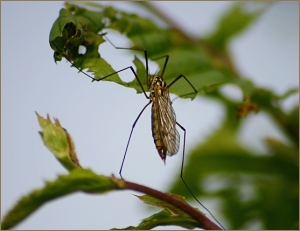 How to deal with insects and insect bites:
How to deal with insects and insect bites:
General information about insects:
Wasps: Overhasty actions against wasp nests do not make sense because only two types of Vespula are responsible for the invasion at the cake plate or at the grilled food, and these hide their nests mostly behind the surfaces of buildings or in the ground. The well visible free hanging nests are inhabited by Dolichovespula, who are not interested in our sweets.
Hornets: They sting a little deeper than wasps but the amount of poison is about the same.
Honeybees belong to the family of apocrita like wasps and bumblebees and can sting, but lose their venom apparatus, which continues to pump toxin into the wound. The honeybee dies after her sting. All other bees - more than 500 species - are harmless and cannot sting.
With the bumblebees only the females sting, but only when they are in great difficulties. Bumblebees are especially protected under the Federal Nature Conservation Act.
Dragonflies are popularly known also as eye driller, devil’s needle or horse slaughterer. An interesting name for an insect that can neither bite nor sting and doesn’t produce poison. They are as harmless as a grasshopper. But as a child, even I was told that three dragonfly stings can kill a man and five stings can kill a horse.
Ants, on the contrary, do have venom glands. The venom consists mainly of formic acid and they bite with their sharp mouthparts.
Horseflies can attack large mammals and are therefore often found on pastures. With the horseflies (Tabanidae), also only the females sting.
During the months of July to October, autumn mites, also called harvest or grass mites, bustle in many gardens. These mites are not insects but arachnids. They wait on blades of grass for their victims. Bites begin to itch only after hours or days, initially without lesions. Only later bubbles or small nodules appear, which often take months to disappear. According to current knowledge, the autumn mite does not transmit diseases.
Ticks transfer a form of meningitis (TBE) and another disease called Lyme disease. For information about Lyme disease, see the keyword in this homepage. A vaccination against meningitis is available.
What is the first aid with insect bites?
- Since the bee spike remains in the skin, remove it as quickly as possible, because venom is still penetrating through it into the body.
- Cooling with a moist compress reduces the risk of swelling and helps to relieve the pain.
- Many people do not know: after bites in the hand or the finger, any finger rings have to be removed. If the hand starts swelling, the fingers are usually also affected. Rings can press the finger so much that the ring has to be cut.
- Silica gel not only helps with insect bites, but also with other small wounds, sunburn and Mallorca acne. It is composed of silicon, oxygen and water and is a very useful naturopathic remedy.
- Apis in low potencies such as D4 is a homeopathy against insect bites.
- In case of bites in the mouth area, you should consult a doctor, even if you are not allergic to insect bites.
- In case of unusually intense swelling after insect bites, fever, swollen lymph nodes, an increasing redness or purulent inflammation, you should also quickly see a doctor.
- Allergic reactions to insect stings should be assessed by a physician as soon as possible.


